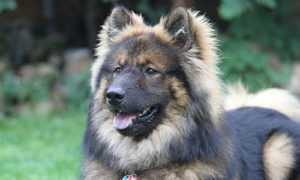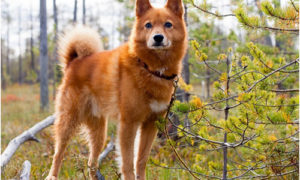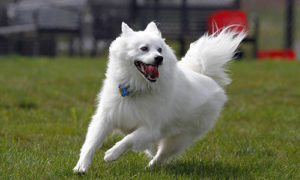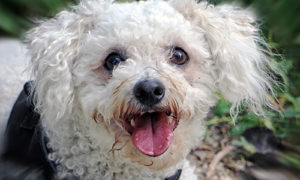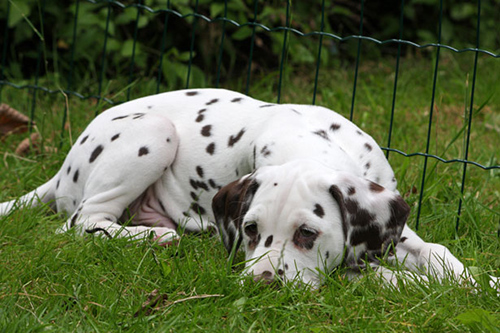
The early origins of the Dalmatian come with a lot of uncertainty. However, some experts believe that the breed originated somewhere around Croatia’s Dalmatia coast; though, there are still many spotted breeds in many parts of Europe. Early mentions of this breed go back to the 18th century.
Despite the Dalmatian’s ancestry, the breed undeniably derived from a sporting lineage. Dalmatians became famous as a carriage dog in the 1800s, and dog owners used them for hunting and military work. This breed will always remain tied to the image of a spotted dog running alongside a horse-drawn carriage or a fire truck.
The breed shot to mainstream popularity after the release of the 1961 Disney film “One Hundred and One Dalmatians,” based on the Dodie Smith 1956 novel.
Dalmatian Breed Standard
The Dalmatian’s most noteworthy feature is its sleek, spotted coat. It is a sturdy, athletic dog with a balanced, graceful outline; square proportions; a deep chest; a level back; a long tail; and round, compact, well-arched feet. The dog’s skull is flat, approximately equal in length and width, and the powerful muzzle equals the head’s length. This breed’s eyes are medium-sized, wide-set, and round. Its ears are set high and carried close to the sides of the head.
Dalmatian Temperament
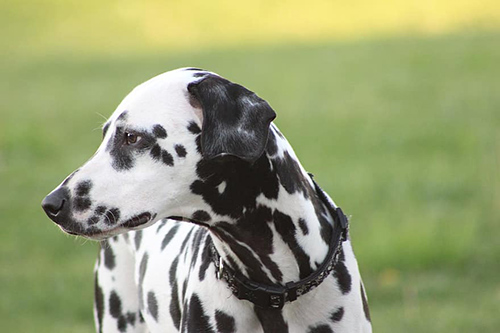
This breed is a loyal and devoted companion; however, this is a working dog that demands plenty of exercises, mental challenges, and of course, companionship. The dog’s territorial instincts make it an excellent watchdog. Dalmatian puppies are very high spirited and playful, and owners need to provide supervision and constant training to keep them out of trouble.
Dalmatians can be aggressive toward strange dogs, but tolerates other pets and is significantly good with horses. Unfortunately, this breed can be too energetic for small children; therefore, supervision is required. Also, they tend to be reserved toward strangers.
Breed Facts
- POPULARITY: Somewhat popular
- FAMILY: Unknown
- AREA OF ORIGIN: Yugoslavia
- DATE OF ORIGIN: Ancient times
- ORIGINAL FUNCTION: Carriage dog
- TODAY’S FUNCTION: Companion, mascot
- OTHER NAME: None
Activity level: This breed requires daily, vigorous exercise. This dog is athletic, hardy, and designed for endurance and running. It is better to exercise them on a leash or within a fenced-in yard. Though they are athletic and loves to run, they are not an outdoor breed. Because of the dog’s short coat, they are highly sensitive to harsh weather conditions.
Grooming: This dog only requires weekly brushing and a bath every other month or so, depending on the activity.
Health
- MAJOR CONCERNS: deafness, urinary stones
- MINOR CONCERNS: allergies, seizures, iris sphincter dysplasia, hypothyroidism
- OCCASIONALLY SEEN: CHD
- SUGGESTED TESTS: hearing, hip
- LIFE SPAN: 12-14 years
- WEIGHT: 40-60 pounds
- HEIGHT: 19-23 inches
NOTE: The Dalmatian suffers from a unique defect that leaves it without the ability to metabolize uric acid into allantoin, which leads to the propensity to form urinary stones.
Dalmatian Breeders and Buying Advice
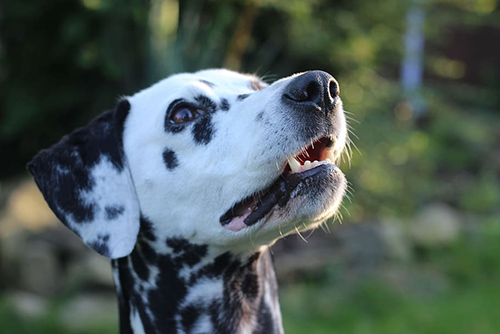
Before purchasing a dog, make sure to look at many litters and study the breed’s standard. Try to attend dog shows if you can and talk to breeders before deciding on your new companion. We recommend that you only purchase from a reputable breeder. Stay away from puppies that are overly timid or domineering. Start socialization and obedience training as early as possible. You can also adopt a rescue dog.
- Parent club: Dalmatian Club of America (www.thedca.org); founded in 1905
- Regional clubs: You can find information about approximately 30 local Dalmatian clubs affiliated with the DCA on the club’s website.
- Rescue: Rescue information is available on the parent club’s website.
Dalmatian Price
The Dalmatian price varies and depends on certain factors such as breeder reputation, location, size of the litter, breed popularity, training and socialization efforts, and lineage of the parents.
The average price for puppies can run you about $800 to $900. However, this price usually will not come with breeding rights or show quality lineage. If you want a dog with breeding rights or show quality potential, you’re going to have to pay a lot more. Be prepared to pay anywhere from $1800 to $5000 and sometimes more depending on the breeder.


